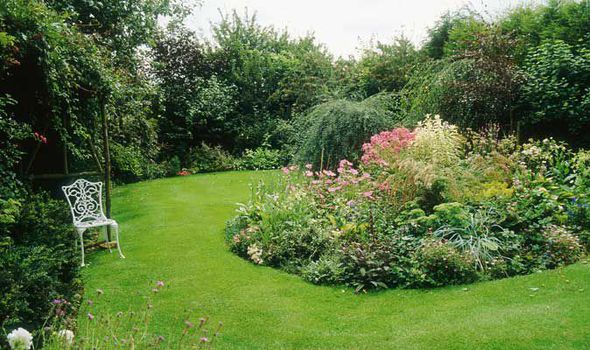Seeding and turfing
Seeding and turfing are two techniques for creating a grass lawn, which is a common feature in a garden. Both techniques require a considerable amount of care and attention.
Generally, turfing is considered to be the easiest and fastest-to-complete option. It requires less work in terms of ground preparation and the turf is provided in rolls that can be cut according to the shape required. However, there will have to be a suitably level and firm surface before the turf is laid. Roots will grow into the soil within two weeks and the resulting lawn can be useable within three weeks.
Other advantages of turfing include that in heavy rain it will not wash off sloped ground as seed might, it is less prone to attack by birds, there is less watering required, and turf can be laid at any time of the year. The disadvantages are that it can be expensive for large areas and it requires fast laying once it has been delivered.
Seeding a lawn is more difficult and preparing the ground is more time-consuming. Seeding involves the removal of stones down to a maximum diameter of no larger than 1 cm, whereas turfing can leave stones of up to 3-4 cm in diameter.
It can take 3-4 months to grow into a useable lawn from seed, and this can be longer depending on the weather conditions. It also requires more aftercare during the first month than turf.
The advantages of seeding are that it is less expensive and time-consuming than turfing, and it is generally the most suitable option for small areas of ground or for repairing lawns. It is also more durable and can be easily reseeded as required.
NB Short Guide, Lime Mortars in Traditional Buildings, published on 1 March 2013 by Historic Scotland, defines seeding as: ‘The nucleation of lime crystals on the surface of particles (usually of the same composition). Seeding particles can act like a catalyst, speeding up the carbonation of lime mortars.’
[edit] Related articles on Designing Buildings
Featured articles and news
Infrastructure that connect the physical and digital domains.
Harnessing robotics and AI in challenging environments
The key to nuclear decommissioning and fusion engineering.
BSRIA announces Lisa Ashworth as new CEO
Tasked with furthering BSRIA’s impressive growth ambitions.
Public buildings get half a million energy efficiency boost
£557 million to switch to cleaner heating and save on energy.
CIOB launches pre-election manifesto
Outlining potential future policies for the next government.
Grenfell Tower Inquiry announcement
Phase 2 hearings come to a close and the final report due in September.
Progress from Parts L, F and O: A whitepaper, one year on.
A replicated study to understand the opinion of practitioners.
ECA announces new president 2024
Electrical engineer and business leader Stuart Smith.
A distinct type of countryside that should be celebrated.
Should Part O be extended to existing buildings?
EAC brands heatwave adaptation a missed opportunity.
Definition of Statutory in workplace and facilities management
Established by IWFM, BESA, CIBSE and BSRIA.
Tackling the transition from traditional heating systems
59% lack the necessary information and confidence to switch.
The general election and the construction industry
As PM, Rishi Sunak announces July 4 date for an election.
Eco apprenticeships continue help grow green workforce
A year after being recognised at the King's coronation.
Permitted development rights for agricultural buildings
The changes coming into effect as of May 21, 2024.






















